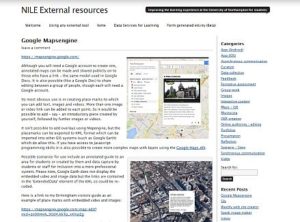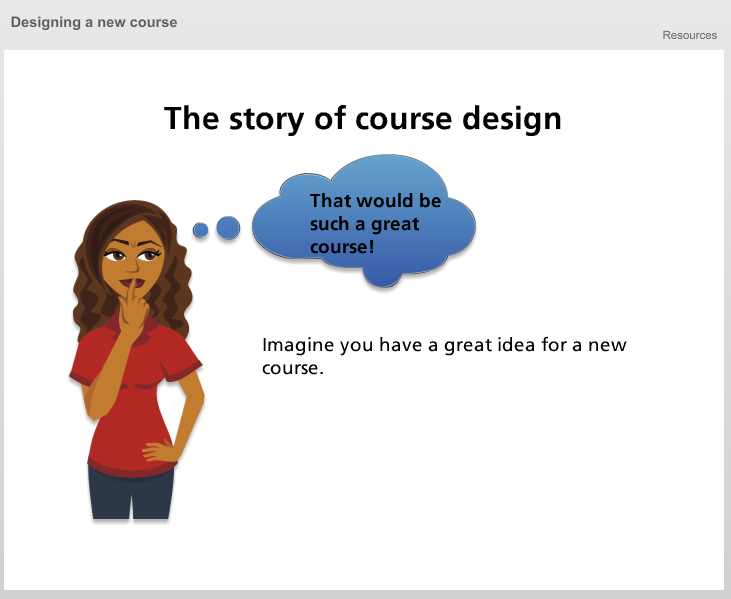 On Monday 10th November, Learning Technology and the Institute of Learning and Teaching will be co-facilitating a full-day workshop on Team-Based Learning with TBL pioneer Larry Michaelsen.
On Monday 10th November, Learning Technology and the Institute of Learning and Teaching will be co-facilitating a full-day workshop on Team-Based Learning with TBL pioneer Larry Michaelsen.
This is an opportunity to experiment with an effective, structured and learner-centred approach to teaching on-campus modules where students work effectively in groups. A combination of individual work, group work and feedback is used to create a motivational framework in which learners increasingly hold each other accountable for coming to class prepared (yes really!) and contributing to discussion.
If you want to learn how to use your class time for more than simply covering content, and focus instead on providing students with opportunities to apply their learning of core course concepts to solve problems, then this workshop is for you.
To find out more about TBL, please watch this short-ish (12 minute) video to find out more about Team-Based Learning or read this short overview.
There are only 54 places available, so book your place today.
- Monday 10th November
- Grand Hall, Newton Building, Avenue Campus
- Refreshments and lunch provided
Learning Designers can provide advice on course design at any time – whether you have a challenge to address in your module, or you’re just looking for new ideas to try. The majority of our work, though, happens when new courses and modules are designed, or existing ones are reviewed. The timeline below looks at the process of creating a new course, and how the Learning Design team fits into it. Click on the image below to launch the timeline:
There is also an overview version available in PDF format.
 LearnTech has a new resource to help instructors to find resources that exist outside NILE that would improve the student experience. The NILEX blog site contains reviews of external tools and examples of how they might be used. Each tool is tagged to make it easier to find when trying to meet a particular need: displaying maps; asynchronous communication; portfolios; curation; and many others. There is also a full text search facility. We hope that CAIeRO participants will find this a particularly useful resource when they are trying to translate their ideas into activities.
LearnTech has a new resource to help instructors to find resources that exist outside NILE that would improve the student experience. The NILEX blog site contains reviews of external tools and examples of how they might be used. Each tool is tagged to make it easier to find when trying to meet a particular need: displaying maps; asynchronous communication; portfolios; curation; and many others. There is also a full text search facility. We hope that CAIeRO participants will find this a particularly useful resource when they are trying to translate their ideas into activities.
 Each tool has been tested in relation to NILE and any integration issues are discussed, along with any registration requirement for staff or students. All the tools are free and licensed to use in education – applications with a ‘paid premium’ element are only included where the free version is of significant use.
Each tool has been tested in relation to NILE and any integration issues are discussed, along with any registration requirement for staff or students. All the tools are free and licensed to use in education – applications with a ‘paid premium’ element are only included where the free version is of significant use.
For instructors interested in the integration of data and data services into their NILE sites (creating ‘mash-ups’ or data for infographics would be examples), a separate module – Data Services for Learners – is included which explains some of the possibilities and includes ideas and examples.
We hope these ideas will help you create new and interesting material that will engage students, as well as new ways for students to collect and present material. New ideas or tools that you think might be included would be very welcome, along with feedback on the content. As external tools often change in their nature and capabilities we do expect them to require updating.
You might already know that the University has plans to extend our portfolio of high quality blended and online courses. These plans aim to help us meet market demand for flexible, scalable study options, as well as allowing us to bring the campus experience into the 21st century, helping students and staff make the most of valuable contact time. The plans are outlined in more detail in this paper on The University of Northampton’s future online and blended offering, which was approved earlier this year.
In the past few weeks, a key element of this has been put in place with the appointment of Learning Designers, a new role with a remit to help programme teams design effective courses for online and blended learning. The new team is based in Library and Learning Services, working closely with Learning Technologists and CfAP as well as the Institute of Learning and Teaching. Watch this short video to find out more about their role:
(or access the transcript here)
There are three Learning Designers in the new team: Rob Farmer, Rachel Maxwell and Julie Usher. The team will offer a range of design support services, including team CAIeROs and one-to-one support.
Each of the six Schools have nominated priority courses for (re)development, and the team will focus primarily on these in the first instance. If you’d like to find out how the team could support your programme or module, or you have some good practice or learning designs to share, please send initial enquiries to Rob Howe, Head of Learning Technology (rob.howe@northampton.ac.uk).
 Personally I love the CAIeRO (module redesign) process. It’s creative, innovative and definitely challenging at times, but most of all it’s fun. My favourite part of the day is storyboarding the module – aligning Learning Outcomes with (new) assessments and then looking at how learners are to engage with appropriate content in order to deepen their learning and apply their knowledge and understanding.
Personally I love the CAIeRO (module redesign) process. It’s creative, innovative and definitely challenging at times, but most of all it’s fun. My favourite part of the day is storyboarding the module – aligning Learning Outcomes with (new) assessments and then looking at how learners are to engage with appropriate content in order to deepen their learning and apply their knowledge and understanding.
Having an ‘outsider’ to your module can be crucial to the level of creativity and innovation that results. As a former FE tutor, and AL for the Business School I have experienced first hand many of the difficulties of trying to deliver engaging content and being so focussed on ensuring that the core content is covered that I couldn’t see the wood for the trees. Being able to take a step back and view what you are doing from an outsiders perspective, often that of a fictional learner, can therefore bring a number of benefits.
 As an example, I was involved in a recent CAIeRO with the School of Health, working on three modules to be delivered fully online. We reached the storyboard phase and the tutor and I were looking at what the module was covering and thinking about how to translate a face-to-face course into an online one. To begin with, the tutor was replicating his F2F module, whilst simultaneously regaling me with stories of student feedback and complaints. “Why am I studying statistics?” and “Why am I studying maths on a health course?!” were two common phrases. It wasn’t that there was anything fundamentally wrong with the module content. There were core concepts that needed to be covered. Creating an agreed glossary was one, and understanding the governmental policy in this particular area was another. And so on, until week 12 when the tutor explained that at this point the students have to apply all their knowledge acquired to date in order to respond to a disease outbreak.
As an example, I was involved in a recent CAIeRO with the School of Health, working on three modules to be delivered fully online. We reached the storyboard phase and the tutor and I were looking at what the module was covering and thinking about how to translate a face-to-face course into an online one. To begin with, the tutor was replicating his F2F module, whilst simultaneously regaling me with stories of student feedback and complaints. “Why am I studying statistics?” and “Why am I studying maths on a health course?!” were two common phrases. It wasn’t that there was anything fundamentally wrong with the module content. There were core concepts that needed to be covered. Creating an agreed glossary was one, and understanding the governmental policy in this particular area was another. And so on, until week 12 when the tutor explained that at this point the students have to apply all their knowledge acquired to date in order to respond to a disease outbreak.
As the ‘outsider’ my instant response to this was … “Now I’m interested. But it’s taken three months of doing this boring stuff to get there!” So my suggestion was to turn his module on its head and put the students into groups in week 1 and then give them the disease outbreak scenario. Their role during the remainder of the module would be the drafting of a suitable response to the outbreak. On the way they would have to get to grips with statistics, appropriate terminology and even governmental policy, but this time, they would have an interesting hook upon which to hang it.
But what are the benefits for students? Well, here are my top five (in no particular order):
- the course should still be constructively aligned;
- students have a guided pathway through core components of the module but are free to explore those components in an order of their choice;
- keeping the same case study for all groups means that each group has to make a specific choice in terms of the preventative strategy adopted – this will increase opportunities for challenge and justification from the remainder of the cohort;
- increased student engagement – the module introduces a real-life scenario and asks them to find a real solution; and
- it potentially enhances their employability skills – learning how to do this in an academic environment is good preparation for the sorts of careers these students typically pursue.
OK, so what’s the big deal you might ask? I mean, it’s great for those students, but there are thousands more on this campus. It’s an approach that I have used in other schools and in vastly different subject areas to good effect. Sharing good practice when it comes to module redesign is important and is something that we share as a team through regular team meetings or through this blog. I have also shared the story at a staff development session in NBS. In my new role as a Learning Designer, I am working more across Schools and, together with my colleagues am seeking to make these creative approaches more visible. As a student, I would want my modules to capture my interest and require me to actively engage with content, whilst preparing me for the real world. Hopefully, full and willing engaging with the CAIeRO process, putting aside your preconceptions and a mindset of ‘this is how I teach this module’ will see more creative ideas such as this become more widespread throughout our institution.
Recent Posts
- Staff GenAI Survey Report 2024
- Blackboard Upgrade – May 2024
- Learning Technology Team Newsletter – Semester 2, 2023/24
- Getting started with AI: A guide to using the Jisc Discovery Tool’s new AI question set.
- Blackboard Upgrade – April 2024
- Exploring the Role of GenAI Text to Enhance Academic Writing: A Conversation with Learning Development Tutor Anne-Marie Langford.
- Interview with the University’s Digital Skills Ambassador
- Blackboard Upgrade – March 2024
- Case study: GenAI in BA Fashion, Textiles, Footwear & Accesories 2024
- Exploring the Educational Potential of Generative Artificial Intelligence: Insights from David Meechan
Tags
ABL Practitioner Stories Academic Skills Accessibility Active Blended Learning (ABL) ADE AI Artificial Intelligence Assessment Design Assessment Tools Blackboard Blackboard Learn Blackboard Upgrade Blended Learning Blogs CAIeRO Collaborate Collaboration Distance Learning Feedback FHES Flipped Learning iNorthampton iPad Kaltura Learner Experience MALT Mobile Newsletter NILE NILE Ultra Outside the box Panopto Presentations Quality Reflection SHED Submitting and Grading Electronically (SaGE) Turnitin Ultra Ultra Upgrade Update Updates Video Waterside XerteArchives
Site Admin


